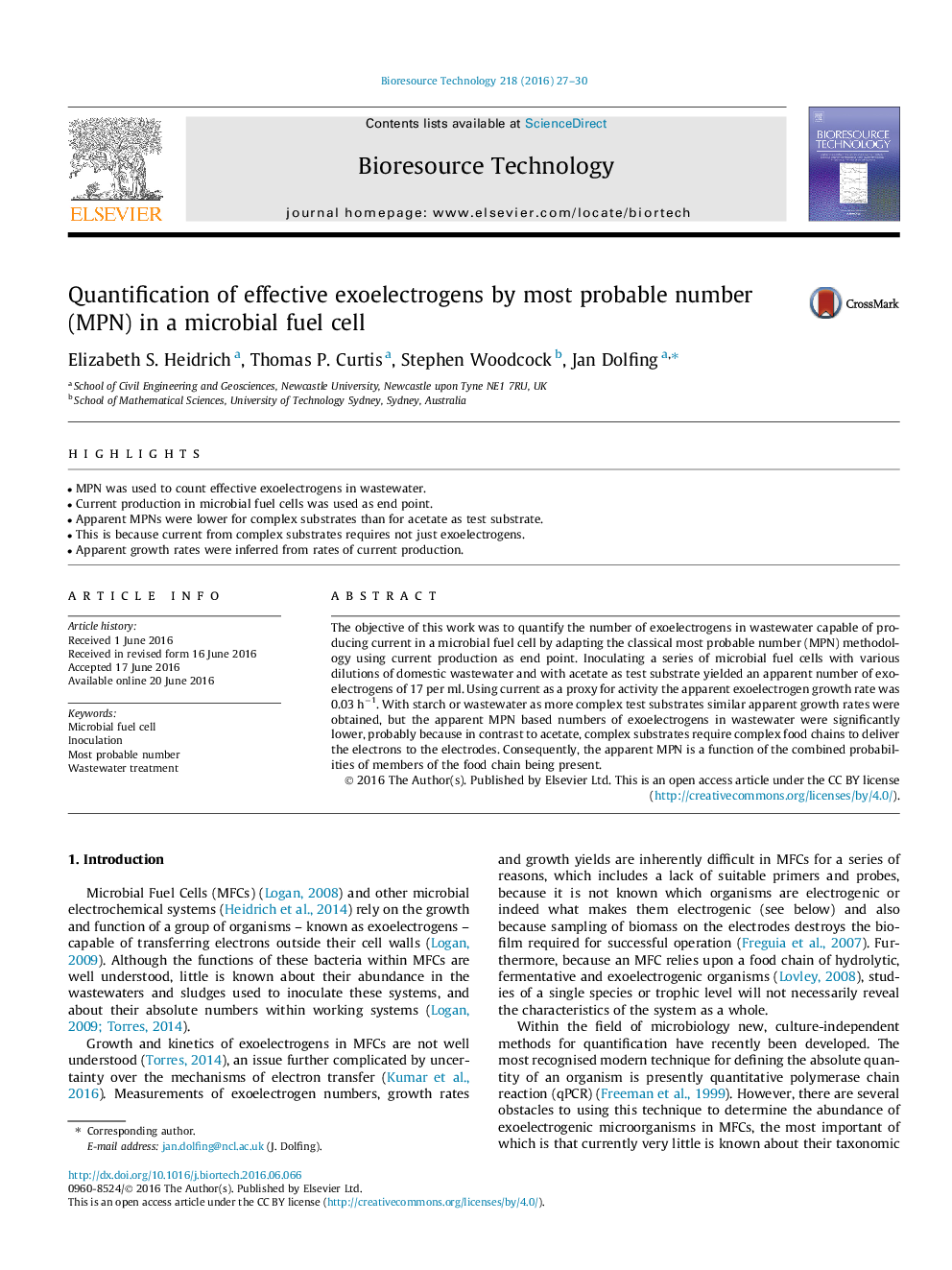| Article ID | Journal | Published Year | Pages | File Type |
|---|---|---|---|---|
| 7070443 | Bioresource Technology | 2016 | 4 Pages |
Abstract
The objective of this work was to quantify the number of exoelectrogens in wastewater capable of producing current in a microbial fuel cell by adapting the classical most probable number (MPN) methodology using current production as end point. Inoculating a series of microbial fuel cells with various dilutions of domestic wastewater and with acetate as test substrate yielded an apparent number of exoelectrogens of 17 per ml. Using current as a proxy for activity the apparent exoelectrogen growth rate was 0.03 hâ1. With starch or wastewater as more complex test substrates similar apparent growth rates were obtained, but the apparent MPN based numbers of exoelectrogens in wastewater were significantly lower, probably because in contrast to acetate, complex substrates require complex food chains to deliver the electrons to the electrodes. Consequently, the apparent MPN is a function of the combined probabilities of members of the food chain being present.
Related Topics
Physical Sciences and Engineering
Chemical Engineering
Process Chemistry and Technology
Authors
Elizabeth S. Heidrich, Thomas P. Curtis, Stephen Woodcock, Jan Dolfing,
